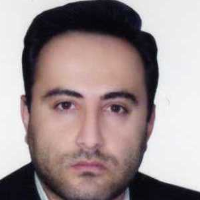Characterization and management of industrial hazardous waste in Qom province
Background & Aims:
The aim of this study was to examine industrial waste minimization through identifying physicochemical properties and recyclable components and classifying hazardous wastes. On the other hand, the importance of this study is that it envisages opportunities as the eco-industrial park through using industrial waste management at international and national levels to reduce waste and pollution.
All the industrial units of industrial towns of Qom province (Shokohieh, Salafchegan, and Mahmoud Abad) and Taghroud industrial area, which have been active in the production of chemical, pharmaceutical, metal, and non-metal materials, were considered as the studied society in this cross-sectional study. The quantity and quality of industrial hazardous waste were evaluated by a questionnaire approved by the Iranian Environmental Protection Organization and field inspections.
The results of the quantitative and qualitative characteristics of the industrial hazardous wastes of industrial towns, including Shokohiyeh, Salafchegan, Mahmoud Abad, and Taghrud (1239 industrial units) demonstrated that 118.449 tons/day of industrial wastes and 15.743 tons/day of hazardous wastes, including 65% solid waste, 31% liquid waste, 3% semi-solid waste and less than 1% and equivalent to 0.02%), were produced in industrial towns. It was found that the industrial units of non-metallic minerals (35.25 tons/day) and then food industries (31.9 tons/day) had the highest amount of industrial waste and dioctyl phthalate units (DOP, 5.8 tons/day), and chemical industry (4.84 tons/day) and lead recycling units (4.14 tons/day) produced the highest amounts of special waste, respectively. Based on the relevant diagrams, the highest values of hazardous wastes were related to Basel Convention code (Y9) for unit process waste DOP (511.5 tons per day) and Basel Convention code (Y31) for lead recycling unit wastes (3.587 tons/day).
Planning and necessary training for managers and technical officials of industrial units in the field of hazardous waste management and the development of a comprehensive plan in this regard is inevitable.
Industry , hazardous waste , Qom , Iran
- حق عضویت دریافتی صرف حمایت از نشریات عضو و نگهداری، تکمیل و توسعه مگیران میشود.
- پرداخت حق اشتراک و دانلود مقالات اجازه بازنشر آن در سایر رسانههای چاپی و دیجیتال را به کاربر نمیدهد.



